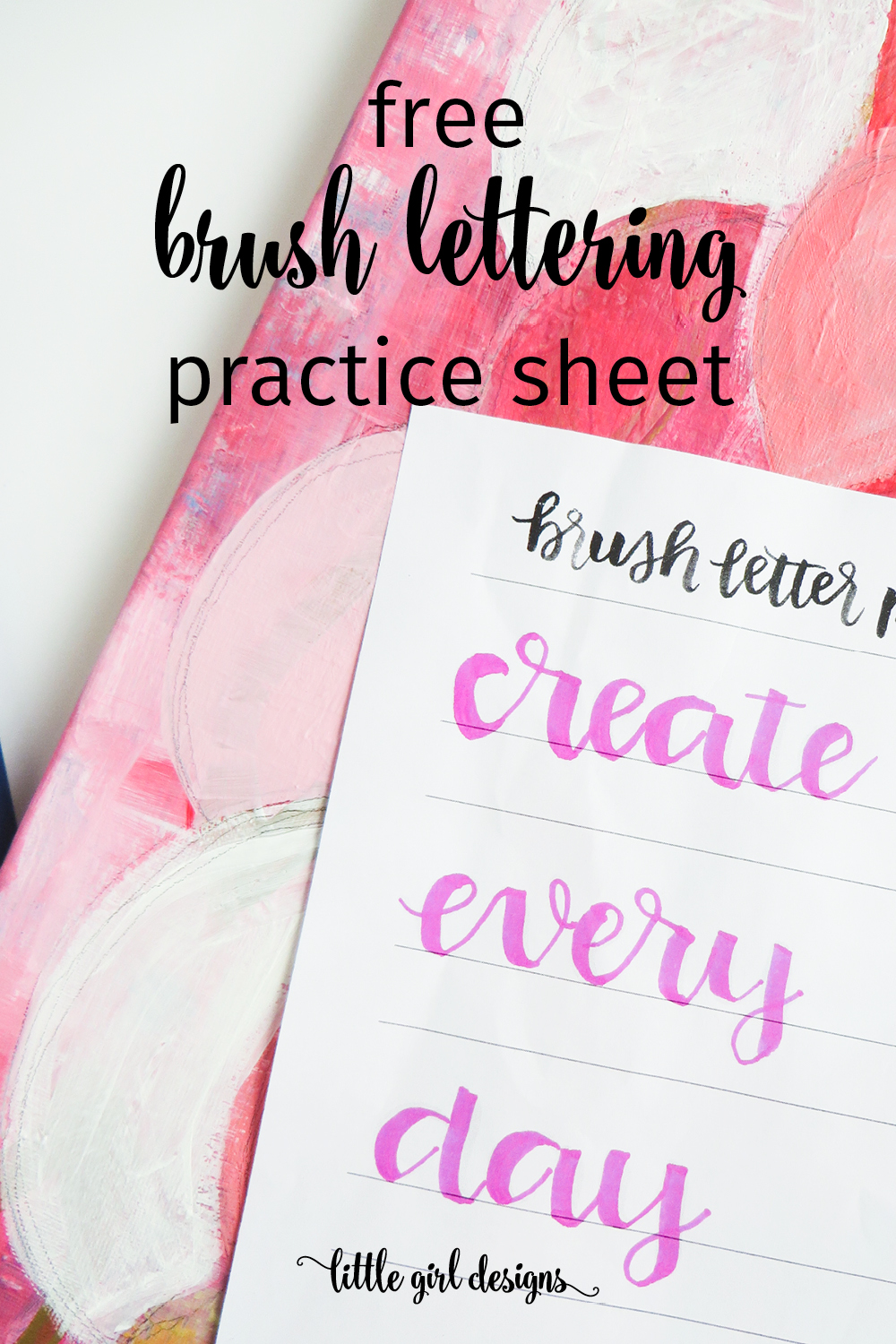Have you ever tried brush lettering? It’s so much fun!
One of the things I’ve been learning this year is hand-lettering. And on my list of avenues to explore in the lettering movement was brush lettering. I love its fluidity and just so happen to have bought some round brushes for watercolors for my birthday. That said, I didn’t know where to start, so I admittedly put it on the back burner until a couple of weeks ago when I received an email from Olivia from Random Olive.
If you’re unfamiliar with her work, she is a brush lettering genius. She letters beautiful quotes on her blog, has a lot of tutorials on YouTube, and has even written a brush lettering guide.
She has graciously offered us a quote that I think is perfect for our challenge: “create every day.” As many of you know, I don’t think it matters if we’re able to create huge magnificent masterpieces or tiny little sketches—what matters is we’re taking the time we have available to create something.
This has been a mindset that I’ve been working on for the past few years, and slowly but surely it’s starting to sink in. 🙂 It really is such a joy to be able to make something, even if it’s a little something each day.

If you’re just getting started with brush lettering, the supplies you’ll need are actually fairly minimal. Here are some options:
- Watercolor brush with watercolors, ink, or watered down ink. Start with a larger brush and work your way down to smaller brushes. Here’s a size 6 brush on Amazon that is close to what I’ve been using.
- A waterbrush is also a really nice tool. I didn’t realize this until recently but you can load these with water OR ink as you paint. (I had previously only filled them with water and dipped the brush into watercolors.) I have one in my purse in order to do tiny paintings when I’m waiting for my daughter at preschool. Guess I’ll be working on my lettering now with that brush. 🙂
- Brush pens, like these Tombow markers also work really well. I like how these markers have a firm felt tip rather than a brush. For me, they’re easier to maneuver. The colors are very vibrant as well. I had another set of “brush pens” but since their tips were actual brush bristles, they tended to spread and not make the fine line I was looking for.
Each one of these options has it’s own pluses and minuses. If you have just one of these for now, try it to see if you like it. Then you can add to your brush lettering collection.

What I like about Olivia’s brush lettering guide is it has an extensive amount of worksheets to teach you how to make each letter. She walks you through the supplies she uses and even gives you a schedule so you can work through the entire guide in 45 days. I have to admit that the quiet practice of brush lettering has been really calming for me on days that were a bit too busy. I pull out my practice sheets in the evening and work my way through them. It’s addicting in a good way. 🙂
As I mentioned, Olivia is offering us a free practice sheet that you can trace and enjoy. You can sign up below to get it delivered to your inbox.
P.S. In a few weeks, we’re going to have another amazing quote for you brush lettering fans. I can’t wait to share it with you! 🙂
Here’s her brush lettering guide if you’re interested. It’s my new favorite thing. 🙂





3 responses to “Create Every Day — Brush Lettering Practice”
Hi Jennie,
Another great post – and I am also a big fan of Olivia’s brush lettering worksheets. One thing I think people who are new to lettering don’t realize is that the type of paper you use is actually really important. If there is too much “tooth” to the paper then it can be too hard to work with for beginners. It can be really frustrating to spend hours practicing and never get any better because your paper keeps throwing your brush off.
But once you get good at lettering, you can do it on a brick wall, lol. Anyway, the site I work for just published a review of what we think is the best paper for learning hand lettering. Please check it out and let us know what you think. Here is the link: http://craftyourself.de/best-paper-for-brush-lettering/
Thanks for your comment, Trisha. At this point, I’ve just been using copy and scrap paper and haven’t had any problems but I’m sure nicer paper would be amazing too. Thanks for sharing your experience! 🙂
Hi Jennie, thanks for your response! The best paper to use for brush lettering is definitely up for debate. Or maybe it depends on how “artistic” you are to begin with? Learning lettering and just drawing in general was really hard for me. I started later in life so maybe I hadn’t developed the necessary fine motor skills as a kid. But it got a lot easier when I switched over to super smooth paper. There is no need to switch if you aren’t having any problems, but if you are, switching to smooth paper could really help. …anyway, I subscribed to your newsletter! Look forward to chatting with you more.